Three Bridges Southall – A fresh approach to the teaching environment
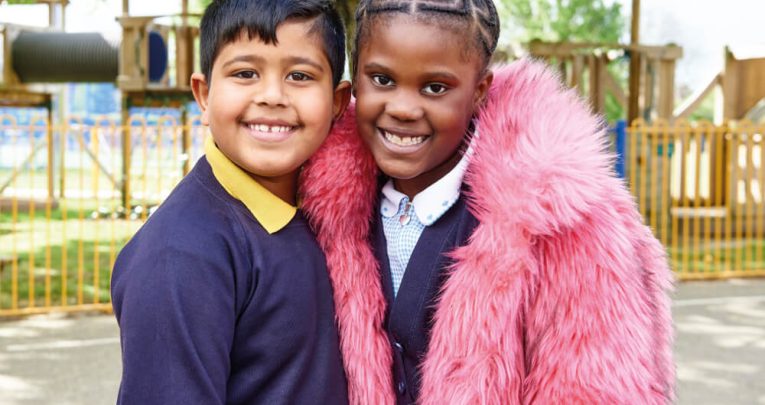
We like to do things differently here, says headteacher Jeremy Hannay…
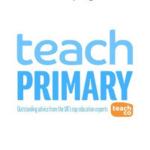
- by Teach Primary
- Leading professional development magazine for KS1 and KS2 educators

Three Bridges Primary School, tucked away in a green and leafy portion of Southall in west London, is a happy school. In fact, according to the large banner that greets you at the gate, it’s an “outstandingly happy school”.
A tour of the generous grounds by headteacher Jeremy Hannay suggests this is not merely a boast, as smiling children surround us, keen to share their latest news. School staff seem similarly content and at ease, and informal banter is exchanged as we pass through the corridors.
School info
- Name: Three Bridges Primary School
- Headteacher: Jeremy Hannay
- Location: Southall, London
- Ofsted rating: Good
- Size: 450 pupils
Jeremy himself is the image of joy as he shows me round, and it appears to be infectious. His character and heritage is evident from his office, with the Canadian flag prominently displayed, along with framed slogans such as, “Love everyone,” and, “The most dangerous phrase in the language is ‘we’ve always done it this way.’”
“We like to do things differently here,” he confirms. And that is, in no small part, down to that red maple leaf dotted around the office walls.
“Coming from Canada, Ontario, specifically, I grew up with a very different paradigm of what was important as a school leader,” explains Jeremy.
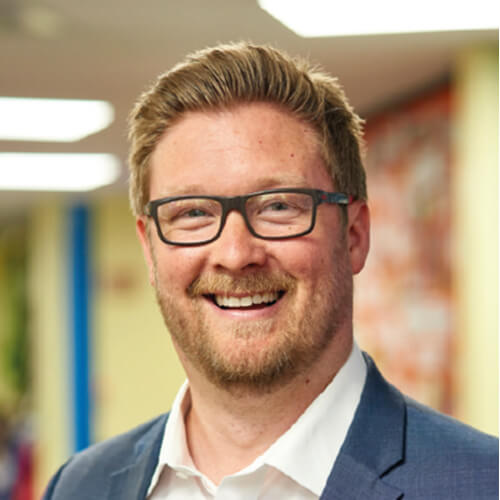
1 | Soil and seed
Jeremy has an analogy to describe his philosophy on learning and where the system has got it wrong. And he uses it frequently, not least to describe how Three Bridges does things differently.
“In education many years ago, the idea took hold that the teacher is the most important thing in the classroom, and leadership is second in terms of impact. The whole system in this country has gotten itself into this idea that we really need to focus on the seed, so, it becomes all the about the teacher. We need to measure them, we need to monitor them, we need to scrutinise them, because they’re the most impactful, so the thinking goes. But we’ve overengineered the seed, and we’ve ignored the soil, the learning environment. We’ve grown super seeds, but what’s happening to the soil they’re planted in?” Jeremy insists that the environment in which the teacher is placed is essential in order to nurture them, to allow them to grow and become their “very best selves”. After all, a seed grows as a result of the conditions around it. If those conditions aren’t right then, ultimately, the children suffer.
“If I, as a leader, point my finger at teachers and say, ‘You’re the problem, you’re doing this wrong,’ then the teachers point their finger at kids in the classroom and say, ‘Well, I taught it, so you should have learnt it, and if you didn’t, then it’s your fault.’
“That’s not the culture you want in a school. As a leader, if I’m pointing the finger at others, then things are going wrong for my seed. I need to look at myself, at the opportunities I’ve provided for teamwork, coursework, collaborative learning.”
For Jeremy, it’s also about being consistent and setting an example. “You can’t tell teachers to ‘do this today and I’ll be in tomorrow to check you’re doing it’ and then expect them to go into classrooms and tell children to collaborate, work together and have high-level, quality conversations. If you’re not engaging your most professional people in those environments, then you can’t expect them to be engaging children either. It’s basic but for some reason it’s amiss in so many places.”
2 | The challenge
Jeremy enthuses about the diverse community in which the school is set, but explains it’s a disadvantaged area and there’s a high degree of transience in the school. “Over a third of the pupils change between Y1 and Y6,” he says. “We’re 96% BAME and 75 to 80 per cent of our pupils are EAL. Over a quarter of the school is on the SEND register. Some would describe it as a very challenging intake.”
Historically, that was borne out in results and attainment, says Jeremy. But not any more. “For the last six or seven years, we’ve been one of the top attaining schools within the local authority, and in the last few years we’ve been in the top three per cent in the country in terms of progress.”
Jeremy started at Three Bridges in 2012 and performed a variety of roles, including assistant head and deputy head, before becoming headteacher two years ago.
“For a Canadian it’s a very odd journey,” he explains. “In Canada, you don’t start in a school as a teacher and then work your way through the ranks to become headteacher there.”
However, Jeremy thinks his different background has worked well for the school. “I like to think I brought a fresh perspective on what was working and what wasn’t, and brought a different way of doing things.”
The first challenge, he says, was to establish a collaborative vision. “It wasn’t a case of me coming in, telling people what to do and them going away and doing it. It was a case of introducing ourselves to research and what it said about best practice in reading and writing, looking at the things we weren’t doing or weren’t aware of. Then we’d go away, try those things in the classroom and come back in three or four weeks and have a conversation over whether those things were working or not. In this way we established a self-improving system. That system has been refined and has lasted ever since.”
However, Jeremy admits there was a mixture of responses when he first put forward his vision. “Initially, the overarching feeling was, ‘If you don’t like the way we do things here, jog on back to Canada.’ Then the attitude moved to, ‘That won’t work.’
The way to counter that was making sure everyone had a voice, he says. “If someone felt it wasn’t going to work, it was important they had the freedom to say so. But they also had the responsibility to try.”
Nevertheless, Jeremy admits there was initially a turnover in staff, “not because people were forced out but because they were uncomfortable with ownership, agency and trust. Because for a very long time, not just in this school but collectively as a nation, people have been told what to do. When you open up a little bit of freedom, for some people that can be paralysing. But I did my very best to try and establish a culture where those people could still flourish. If they needed more support, they got it.”
Today, the different culture is firmly embedded in the school, says Jeremy. “The teachers know they are afforded the capacity and professionalism of disagreeing. They don’t do things because I want them to do it. No one in this building is afraid to tell me if they think something isn’t right. But they also know they’re part of the solution. They can say, ‘This isn’t working so why don’t we try it this way?’”
3 | Different thinking
Three Bridges does things differently in more ways than one. “We don’t have traditional performance management in this school,” explains Jeremy. “There are no data targets. What we focus on is professional growth and development. Each professional person in the building comes in with two or three lines of enquiry, one related to our school development programme and one or two related to their own professional growth and development.”
The focus, says Jeremy, is providing people with the opportunity to take ownership of their environment as a professional. “And professional learning leads to professional growth and impact,” he adds. “Everything now is about the learner and the learning, not just the teacher and the teaching. It’s not about, ‘What am I going to teach today?’ It’s about, ‘What do I want children to learn today?’ That’s a very different paradigm.”
Teachers at Three Bridges plan series of lessons collaboratively, which alleviates any kind of blame culture. “If it doesn’t go well, no one is pointing fingers at a teacher saying, ‘That lesson was horrible.’ They’re saying, ‘Let’s go back to the drawing board. We thought this would work but it didn’t, so what can we do differently and what can we do better?’”
The methods are constantly being refined and reviewed in what Jeremy describes as a professional coaching culture. “I don’t get to tell everyone what best practice in teaching looks like just because I am headteacher,” he says. “That’s outrageous! I’ve never understood the thinking behind that. Was I a good teacher? I’d like to think so. Are there people at this school who are way better teachers than I was when I was teaching? Definitely. So, I would never presume to go into a classroom and just tell someone what I think.”
The senior leadership team and middle leaders at Three Bridges are coached externally, and the teaching staff are coached by professional growth partners, a mid-level leader, and Jeremy.
“We don’t do regular lesson observations on teachers,” he explains, “but if there is a situation where teachers ask me to come in or they’re a new teacher in the school, we don’t have a one-way feedback session where I’m telling them what I think could have gone better and then asking them how they think things went. The whole thing is centred around reflective conversation, helping them home in on where they’re doing really well and where things could be better from their perspective. It’s about building the idea that they have ownership, and there’s an authenticity to the change because it’s not just because I want it.”
According to Jeremy, it’s this culture that allows new programmes in the school – whether English, maths, science or anything else – to be successful, rather than the programmes themselves.
4 | Learning from others
And Jeremy is keen to pick up best practice from elsewhere. “I think part of good leadership is finding people who are perhaps doing a better job at something than us, going in and humbly saying, ‘Teach me everything.’ Then I can come back and say, ‘Here are the things I thought were golden about what was going on there. Here’s how that might look in our school.’”
The teaching staff also get the opportunity to visit other schools and suggest ways Three Bridges could do things better.
Inevitably, some ideas don’t work. “For example,” says Jeremy, “one of the things we were looking at last year were assemblies, questioning the way they were done. In what situation as an adult do you walk into a room, sit in rows, listen to one speaker, not talk and then walk off in silence? So, we decided we were going to try a new approach where some days we might come in doing a bit of a dance, or we might be playing different music, or the children might come in talking to each other.”
The new methods, though, just didn’t work. “It was pure chaos, and lots of assemblies were lost on trying this,” says Jeremy. “I had a feedback session with senior staff over how we thought things were going and they basically just fired daggers at this idea I’d had. It wasn’t right so we stopped doing it.”
But Jeremy’s not giving up. Typically, he’s still thinking of ways to do it differently. “Now we’ve revisited it again and I’ve visited a school that I think does assemblies in an innovative and creative way that supports the ethos of our school but has a structure to it, so we’re going to be trialling that in the summer.”
Ultimately, Jeremy wants his kind of vision to spread further. “If a school like ours, which has a really challenging intake, can do this, then it can work anywhere,” he says. “My ambition is to build a network of like-minded schools, aligned with what I’m talking about. We need to band together. We’ve found a number of steps that work and there are other schools that have found other steps that are just as good. We can say things collectively about high-quality education and professional environments. And that’s one of the ways we can create social change.”
4 ideas to magpie from Three Bridges Primary
- Move towards self-directed CPD and teacher-led learning. Three Bridges believes in staff taking ownership of their professional environment. Give teachers the agency to make professional decisions.
- Learn from the way others are doing things better. Three Bridges has established an “outreach culture” where visits are arranged to share best practice with other schools.
- Try to balance the teaching staff. Three Bridges aims for 50-50 mix of men and women among its teachers. This especially helps with a challenging intake where pupils benefit from both male and female role models.
- Focus on learning within the classroom and celebrate it outside. At Three Bridges, the displays in classrooms serve the purpose of teaching, while artwork in the corridors shows off the children’s work.
Meet the teachers
Haleema Ahmed, Y2 teacher
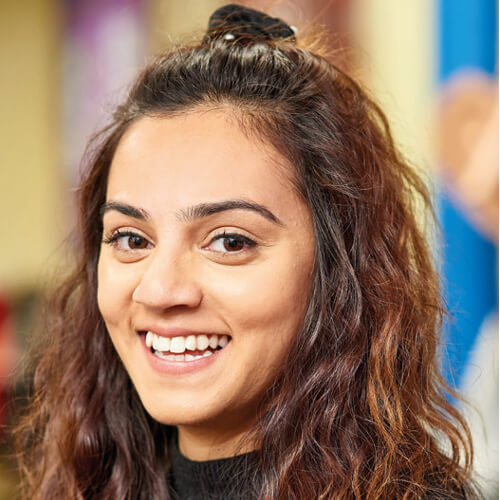
I came from working in a really dull, boring, assessment-based environment where everything was focused on results. There was so much scrutiny from above. When I came here it took me five minutes to decide this was the place I wanted to be, and these were the people I needed to be working with. It just feels fresh and forward-thinking.
Dean Lynch, EYFS & Y1 leader
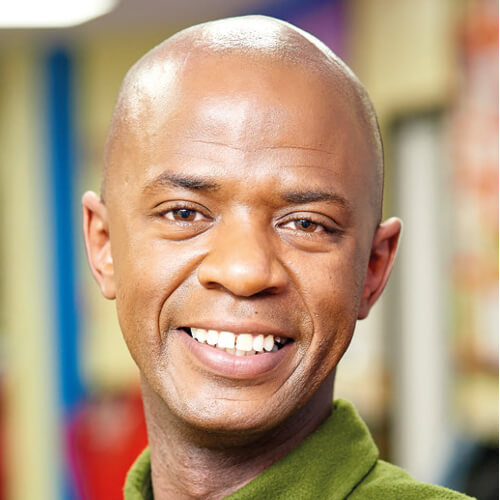
I think there’s a really special vibe in this school that comes from everybody working collaboratively together towards the same goal. Also, as a leader, we’re given autonomy to make the right decisions, and to try things out and test ideas. There’s no fear or worry about failure. We can give something a go and if it doesn’t work, that’s fine.
Kathryn Mitchell, Y1 teacher
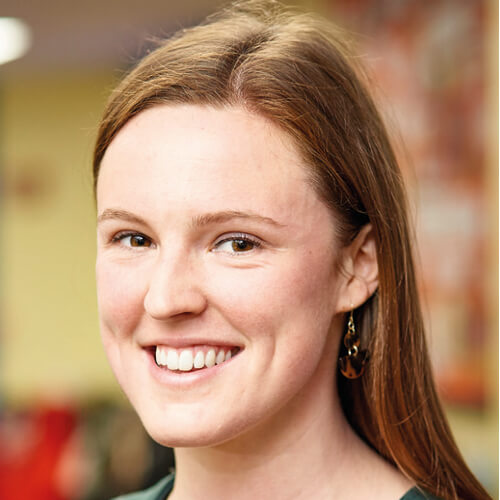
This is my first teaching job and I’ve felt very supported from the beginning. I was never worried about having to go to my team leader for help. I like the research we do, and it’s something my friends who work at other schools never talk about. We’re empowered and given the opportunity to improve the way we do things.
David O’Connell, Y6 teacher
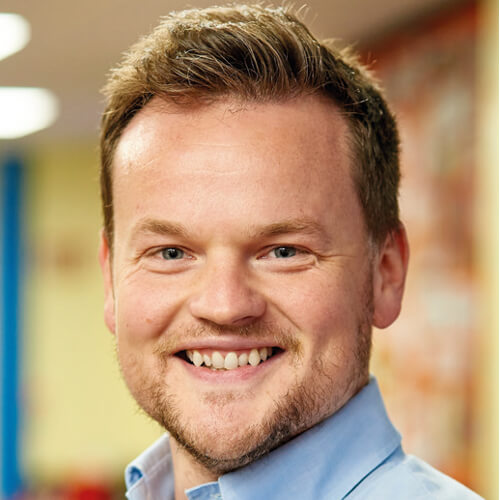
Rather than doing cycles of observation we do lesson study, focusing on something specific to improve teaching and learning, such as helping children who are reluctant to share their ideas in class and improving their confidence. We also get to plan collaboratively. Everything we do is collaborative. For me, they are the biggest benefits of teaching here.
Pupils’ voice
Matilda
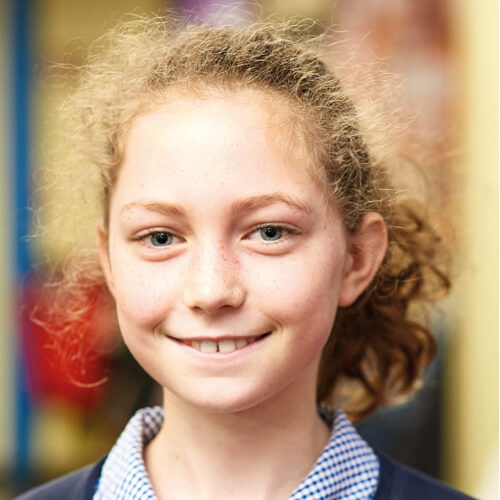
What I like best about this school is everyone is really friendly and kind towards each other. I really like English and I like to write about things that are happening in the world, like global warming and climate change.
Nawaal
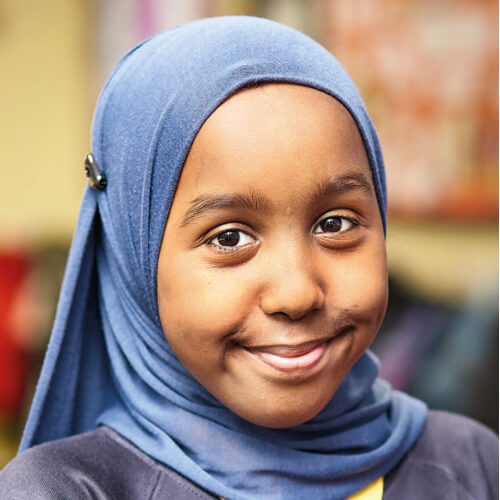
I’ve learnt a lot from my years in this school. I like literacy. I really enjoy writing stories. It opens my imagination and I get lost in my stories. I’m also PE ambassador and I get to help with sports.
Niayesh
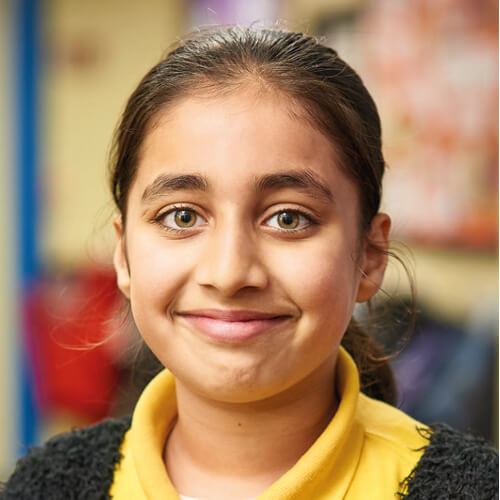
All the teachers are happy at the school and everyone gets along and enjoys playing together. My favourite lesson is maths. We get to do a journal and we learn something new every day. Today we learnt about pie charts.
Prabhveer
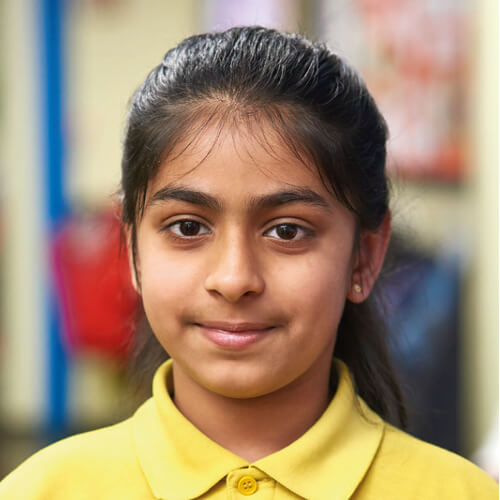
The teachers and the students are really kind and help you whenever you’re stuck, or something’s happening to you. There are lots of activities we can do. We have forest school and you can sign up for canoeing after school.










